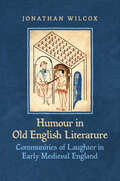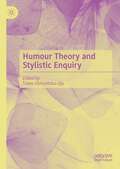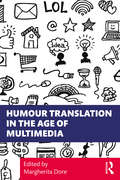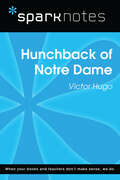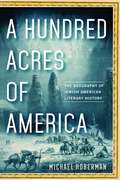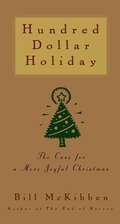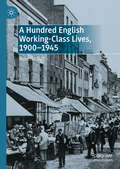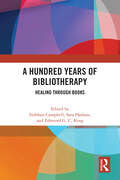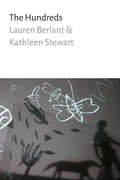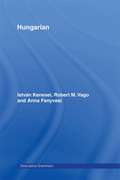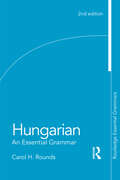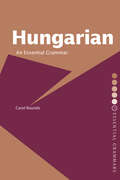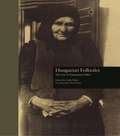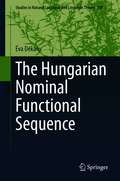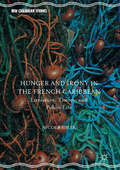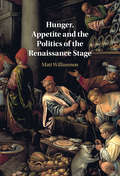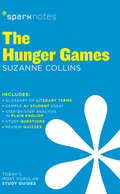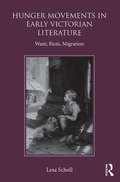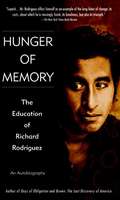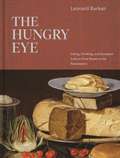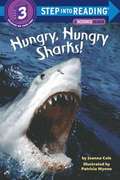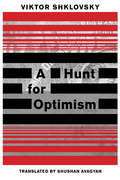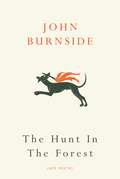- Table View
- List View
Humour in Old English Literature: Communities of Laughter in Early Medieval England
by Jonathan WilcoxHumour in Old English Literature deploys modern theories of humour to explore the style and content of surviving writing from early medieval England. The book analyses Old English riddles, wisdom literature, runic writing, the deployment of rhymes, and humour in heroic poetry, hagiography, and romance. Drawing on a fine-tuned understanding of literary technique, the book presents a revisionist view of Old English literature, partly by reclaiming often-neglected texts and partly by uncovering ironies and embarrassments within well-established works, including Beowulf. Most surprisingly, Jonathan Wilcox engages the large body of didactic literature, pinpointing humour in two anonymous homilies along with extensive use in saints’ lives. Each chapter ends by revealing a different audience that would have shared in the laughter. Wilcox suggests that the humour of Old English literature has been scantily covered in past scholarship because modern readers expect a dour and serious corpus. Humour in Old English Literature aims to break that cycle by highlighting works and moments that are as entertaining now as they were then.
Humour Theory and Stylistic Enquiry
by Taiwo Oloruntoba-OjuThis edited book brings together scholarly chapters on linguistic aspects of humour in literary and non-literary domains and contexts in different parts of the world. Previous scholarly engagements and theoretical postulations on humour and the comic provide veritable resources for reexamining the relationship between linguistic elements and comic sensations on the one hand, and the validity of interpretive humour stylistics on the other hand. Renowned Stylistics scholars, such as Michael Toolan, who writes the volume’s foreword against the backdrop of nearly four decades of scholarly engagement with stylistics, and Katie Wales, who in this volume engages with Charles Dickens, one of the most eminent satirists in English literature, as well as many other European and African authors who have worked ceaselessly in the area of humour and language, weigh in on the topic of language and humour in this volume. Together, they provide a variety of interesting perspectives on the topic, deploying different textual sources from different media and from different regions of the world. Part of the book’s offering includes integrative stylistic approaches to humour in African, European and American written texts, examinations of social media and political humour in Nigeria, Cameroon and Zimbabwe, pragmatics and humorous stance-taking, incongruity as comedy in works of fiction, and a unified levels of linguistic analysis approach to the investigation of humour. This book will be of interest to academics and students of Linguistics, Stylistics, Communications and Media Studies, and Humour Studies. Taiwo Oloruntoba-Oju is a Professor in the Department of English at the University of Ilorin in Nigeria
Humour Translation in the Age of Multimedia
by Margherita DoreThis volume seeks to investigate how humour translation has developed since the beginning of the 21st century, focusing in particular on new ways of communication. The authors, drawn from a range of countries, cultures and academic traditions, address and debate how today’s globalised communication, media and new technologies are influencing and shaping the translation of humour. Examining both how humour translation exploits new means of communication and how the processes of humour translation may be challenged and enhanced by technologies, the chapters cover theoretical foundations and implications, and methodological practices and challenges. They include a description of current research or practice, and comments on possible future developments. The contributions interconnect around the issue of humour creation and translation in the 21st century, which can truly be labelled as the age of multimedia. Accessible and engaging, this is essential reading for advanced students and researchers in Translation Studies and Humour Studies.
Hunchback of Notre Dame (SparkNotes Literature Guide Series)
by SparkNotesHunchback of Notre Dame (SparkNotes Literature Guide) by Victor Hugo Making the reading experience fun! Created by Harvard students for students everywhere, SparkNotes is a new breed of study guide: smarter, better, faster. Geared to what today's students need to know, SparkNotes provides: *Chapter-by-chapter analysis *Explanations of key themes, motifs, and symbols *A review quiz and essay topicsLively and accessible, these guides are perfect for late-night studying and writing papers
A Hundred Acres of America: The Geography of Jewish American Literary History
by Michael HobermanJewish writers have long had a sense of place in the United States, and interpretations of American geography have appeared in Jewish American literature from the colonial era forward. But troublingly, scholarship on Jewish American literary history often limits itself to an immigrant model, situating the Jewish American literary canon firmly and inescapably among the immigrant authors and early environments of the early twentieth century. In A Hundred Acres of America, Michael Hoberman combines literary history and geography to restore Jewish American writers to their roles as critical members of the American literary landscape from the 1850s to the present, and to argue that Jewish history, American literary history, and the inhabitation of American geography are, and always have been, contiguous entities.
Hundred Dollar Holiday
by Bill MckibbenToo many people have come to dread the approach of the holidays, a season that should -- and can -- be the most relaxed, intimate, joyful, and spiritual time of the year. In this book, Bill McKibben offers some suggestions on how to rethink Christmastime, so that our current obsession with present-buying becomes less important than the dozens of other possible traditions and celebrations.Working through their local churches, McKibben and his colleagues found that people were hungry for a more joyful Christmas season. For many, trying to limit the amount of money they spent at Christmas to about a hundred dollars per family, was a real spur to their creativity -- and a real anchor against the relentless onslaught of commercials and catalogs that try to say Christmas is only Christmas if it comes from a store. McKibben shows how the store-bought Christmas developed and how out of tune it is with our current lives, when we're really eager for family fellowship for community involvement, for contact with the natural world, and also for the blessed silence and peace that the season should offer. McKibben shows us how to return to a simpler and more enjoyable holiday.Christmas is too wonderful a celebration to give up on, too precious a time simply to repeat the same empty gestures from year to year. This book will serve as a road map to a Christmas far more joyful than the ones you've known in the past.
A Hundred English Working-Class Lives, 1900-1945
by Rebecca BallStanley Rice, born in London in 1905, began his autobiography by stating that his life was ‘an ordinary average life with all its ups and downs’. Stanley may have described his life as ordinary, and yet he lived through a period of rapid social change, including two world wars. Despite this, Stanley assumed that his life story would be of little interest to most readers, as he had not achieved great fame or any notable accolades. This book argues that this is exactly why historians should focus on such life stories, as there is much to be gained by focusing on memories of ‘ordinary average lives’, as they can expand our knowledge of the past, often revealing firsthand experiences that have been excluded from the historical record. This book does not intend to be a general social history of the working class. Rather, it is a work of memory, drawing upon a microhistory methodology to examine how a sample of one hundred working-class autobiographers remembered and wrote about living through years that were punctuated by two worldwide conflicts and a global economic depression.
A Hundred Years of Bibliotherapy: Healing through Books
byThe First World War gave new and vital impetus to the ancient idea that books could heal. This interdisciplinary collection provides a targeted survey of 100 years of historical and contemporary understandings and practices of ‘the book as cure’.The contributors explore the curative practices of wartime reading, how they were developed and institutionalized after the war, and the afterlives of these ideas and practices today. Divided into three sections, the first considers bibliotherapy in World War I.’ It is rooted in the wartime cultures which ensured bibliotherapy became part of the active treatment of soldiers’ damaged minds and bodies on both sides of the Atlantic after 1914. Parts two and three examine the expanding variety of critical contexts, both historical and more modern, in which reading and wellbeing continued to intersect. The chapters draw on a wide range of source material from trench magazines to autograph books to e-novels, as well as on data and information drawn from practice-based encounters. They also provide the basis for further scholarly exploration of, for example, national traditions and contexts and the inter-disciplinary relationships which they inspire.A Hundred Years of Bibliotherapy: Healing through Books provides the first interdisciplinary dialogue on and account of bibliotherapy, addressing both historical and present-day modes of engaging with the ostensibly curative power of reading and reading cultures. It is an invaluable resource for scholars of literary studies, book history, and the medical humanities.
The Hundreds
by Lauren Berlant Kathleen StewartIn The Hundreds Lauren Berlant and Kathleen Stewart speculate on writing, affect, politics, and attention to processes of world-making. The experiment of the one hundred word constraint—each piece is one hundred or multiples of one hundred words long—amplifies the resonance of things that are happening in atmospheres, rhythms of encounter, and scenes that shift the social and conceptual ground. What's an encounter with anything once it's seen as an incitement to composition? What's a concept or a theory if they're no longer seen as a truth effect, but a training in absorption, attention, and framing? The Hundreds includes four indexes in which Andrew Causey, Susan Lepselter, Fred Moten, and Stephen Muecke each respond with their own compositional, conceptual, and formal staging of the worlds of the book.
Hungarian: Papers From The 2007 New York Conference (Descriptive Grammars #11)
by Istvan Kenesei Robert M. Vago Anna FenyvesiHungarian is spoken by 12-14 million people worldwide. A unique language, completely unrelated to the languages of its neighbouring countries, it boasts a grammar full of complex features and a vocabulary deriving largely from Asia.Hungarian addresses current issues in the description of languages and applies up-to-date research techniques to Hungarian. This is the first comprehensive descriptive grammar of the Hungarian language available in English.
Hungarian: The Complete Course For Beginners (Routledge Essential Grammars)
by Carol RoundsHungarian: An Essential Grammar is a concise, user-friendly guide to the most important structures of this fascinating language. All students of Hungarian, whether beginners or at intermediate and advanced levels, will welcome its clarity of presentation and jargon-free explanations. It is ideal for those studying independently or following a taught course. Topics include: verbal prefixes aspect and tense word-formation mechanisms vowel harmony the case system and its uses word order appendices include the formation of irregular verbs, complete noun declensions and irregular noun patterns With numerous language examples bringing grammar to life, this truly essential reference work will prove invaluable to all students looking to master the patterns and irregularities of modern Hungarian.
Hungarian: An Essential Grammar (Routledge Essential Grammars)
by Carol H. RoundsThis user-friendly guide to modern Hungarian clearly introduces the most important structures of this fascinating language. Suitable for beginning, intermediate and advanced students, it can be used by those studying independently or following a taught course. Topics include:* verbal prefixes* aspect and tense* word-formation mechanisms* linking vowels* the case system and its uses* word order.Appendices include the formation of irregular verbs, complete noun declensions and irregular noun patterns.
Hungarian Folktales: The Art of Zsuzsanna Palk-
by Linda DéghFirst published in 1996. Routledge is an imprint of Taylor & Francis, an informa company.
The Hungarian Nominal Functional Sequence (Studies in Natural Language and Linguistic Theory #100)
by Éva DékányThe Hungarian Nominal Functional Sequence combines the methods of syntactic cartography with evidence from compositional semantics in a comprehensive exploration of the structure of Noun Phrases. Proceeding from the lexical core to the top of DP, it uses Hungarian as a window on the underlying universal functional hierarchy of Noun Phrases, but it also regularly complements and supports the analysis with cross-linguistic evidence. The book works out a minimal map of the extended NP in the sense that the proposed hierarchy only has projections which host overt material and it does not draw on semantically empty word order projections. Topics which receive special attention include the syntax of classifiers, demonstratives, proper names, possessive NPs and plural pronouns.
Hunger and Irony in the French Caribbean: Literature, Theory, and Public Life (New Caribbean Studies)
by Nicole SimekThrough a series of case studies spanning the bounds of literature, photography, essay, and manifesto, this book examines the ways in which literary texts do theoretical, ethical, and political work. Nicole Simek approaches the relationship between literature, theory, and public life through a specific site, the French Antillean islands of Guadeloupe and Martinique, and focuses on two mutually elucidating terms: hunger and irony. Reading these concepts together helps elucidate irony’s creative potential and limits. If hunger gives irony purchase by anchoring it in particular historical and material conditions, irony also gives a literature and politics of hunger a means for moving beyond a given situation, for pushing through the inertias of history and culture.
Hunger, Appetite and the Politics of the Renaissance Stage
by Matt WilliamsonHunger and appetite permeate Renaissance theatre, with servants, soldiers, courtiers and misers all defined with striking regularity through their relation to food. Demonstrating the profound ongoing relevance of Marxist literary theory, Hunger, Appetite and the Politics of the Renaissance Stage highlights the decisive role of these drives in the complex politics of early modern drama. Plenty and excess were thematically inseparable from scarcity and want for contemporary audiences, such that hunger and appetite together acquired a unique significance as both subject and medium of political debate. Focusing critical attention on the relationship between cultural texts and the material base of society, Matthew Williamson reveals the close connections between how these drives were represented and the underlying socioeconomic changes of the period. At the same time, he shows how hunger and appetite provided the theatres with a means of conceptualising these changes and interrogating the forces that motivated them.
The Hunger Games (SparkNotes Literature Guide Series #34)
by SparkNotesThe Hunger Games (SparkNotes Literature Guide) by Suzanne Collins Making the reading experience fun! When a paper is due, and dreaded exams loom, here's the lit-crit help students need to succeed! SparkNotes Literature Guides make studying smarter, better, and faster. They provide chapter-by-chapter analysis; explanations of key themes, motifs, and symbols; a review quiz; and essay topics. Lively and accessible, SparkNotes is perfect for late-night studying and paper writing. Includes:An A+ Essay—an actual literary essay written about the Spark-ed book—to show students how a paper should be written.16 pages devoted to writing a literary essay including: a glossary of literary termsStep-by-step tutoring on how to write a literary essayA feature on how not to plagiarize
Hunger Movements in Early Victorian Literature: Want, Riots, Migration
by Lesa SchollIn Hunger Movements in Early Victorian Literature, Lesa Scholl explores the ways in which the language of starvation interacts with narratives of emotional and intellectual want to create a dynamic, evolving notion of hunger. Scholl's interdisciplinary study emphasises literary analysis, sensory history, and political economy to interrogate the progression of hunger in Britain from the early 1830s to the late 1860s. Examining works by Charles Dickens, Harriet Martineau, George Eliot, Elizabeth Gaskell, Henry Mayhew, and Charlotte Bronte, Scholl argues for the centrality of hunger in social development and understanding. She shows how the rhetoric of hunger moves beyond critiques of physical starvation to a paradigm in which the dominant narrative of civilisation is predicated on the continual progress and evolution of literal and metaphorical taste. Her study makes a persuasive case for how hunger, as a signifier of both individual and corporate ambition, is a necessarily self-interested and increasingly violent agent of progress within the discourse of political economy that emerged in the eighteenth century and subsequently shaped nineteenth-century social and political life.
Hunger Of Memory: The Education Of Richard Rodriguez
by Richard RodriguezHunger of Memory is the story of Mexican-American Richard Rodriguez, who begins his schooling in Sacramento, California, knowing just 50 words of English, and concludes his university studies in the stately quiet of the reading room of the British Museum. Here is the poignant journey of a "minority student" who pays the cost of his social assimilation and academic success with a painful alienation - from his past, his parents, his culture - and so describes the high price of "making it" in middle-class America. Provocative in its positions on affirmative action and bilingual education, Hunger of Memory is a powerful political statement, a profound study of the importance of language . . . and the moving, intimate portrait of a boy struggling to become a man. From the Paperback edition. Note: The author uses British punctuation.
Hunger of Memory: An Autobiography
by Richard RodriguezHere is the poignant journey of a "minority student" who pays the cost of his social assimilation and academic success with a painful alienation -- from his past, his parents, his culture -- and so describes the high price of "making it" in middle-class America.
The Hungry Eye: Eating, Drinking, and European Culture from Rome to the Renaissance
by Leonard BarkanAn enticing history of food and drink in Western art and cultureEating and drinking can be aesthetic experiences as well as sensory ones. The Hungry Eye takes readers from antiquity to the Renaissance to explore the central role of food and drink in literature, art, philosophy, religion, and statecraft.In this beautifully illustrated book, Leonard Barkan provides an illuminating meditation on how culture finds expression in what we eat and drink. Plato's Symposium is a timeless philosophical text, one that also describes a drinking party. Salome performed her dance at a banquet where the head of John the Baptist was presented on a platter. Barkan looks at ancient mosaics, Dutch still life, and Venetian Last Suppers. He describes how ancient Rome was a paradise of culinary obsessives, and explains what it meant for the Israelites to dine on manna. He discusses the surprising relationship between Renaissance perspective and dinner parties, and sheds new light on the moment when the risen Christ appears to his disciples hungry for a piece of broiled fish. Readers will browse the pages of the Deipnosophistae—an ancient Greek work in sixteen volumes about a single meal, complete with menus—and gain epicurean insights into such figures as Rabelais and Shakespeare, Leonardo and Vermeer.A book for anyone who relishes the pleasures of the table, The Hungry Eye is an erudite and uniquely personal look at all the glorious ways that food and drink have transfigured Western arts and high culture.
Hungry, Hungry Sharks
by Joanna ColeDid you know there were sharks on earth even before the dinosaurs? Did you know the dwarf shark is no bigger than your hand? Did you know sharks never stop swimming and never go to sleep? You can find out all about sharks in this book!
A Hunt for Optimism
by Viktor Shklovsky Shushan AvagyanBegun in 1929 under the title "New Prose," and drastically revised after Vladimir Mayakovsky's sudden death, A Hunt for Optimism (1931) circles obsessively around a single scene of interrogation in which a writer is subjected to a show trial for his unorthodoxy. Using multiple perspectives, fragments, and aphorisms, and bearing the vulnerability of both the Russian Jewry and the anti-Bolshevik intelligentsia--who had unwittingly become the "enemies of the people"--Hunt satirizes Soviet censorship and the ineptitude of Soviet leaders with acerbic panache. Despite criticism at the time that it lacked unity and was too "variegated" to be called a purely "Shklovskian book," Hunt is stylistically unpredictable, experimentally bold, and unapologetically ironic--making it one of the finest books in Shklovsky's body of work.
A Hunt for Optimism
by Viktor Shklovsky Shushan AvagyanBegun in 1929 under the title "New Prose," and drastically revised after Vladimir Mayakovsky's sudden death, A Hunt for Optimism (1931) circles obsessively around a single scene of interrogation in which a writer is subjected to a show trial for his unorthodoxy. Using multiple perspectives, fragments, and aphorisms, and bearing the vulnerability of both the Russian Jewry and the anti-Bolshevik intelligentsia--who had unwittingly become the "enemies of the people"--Hunt satirizes Soviet censorship and the ineptitude of Soviet leaders with acerbic panache. Despite criticism at the time that it lacked unity and was too "variegated" to be called a purely "Shklovskian book," Hunt is stylistically unpredictable, experimentally bold, and unapologetically ironic--making it one of the finest books in Shklovsky's body of work.
The Hunt in the Forest
by John BurnsideTaking its title from Uccello's famous painting of a band of men - on foot and on horseback - massing for the chase, John Burnside's new poems take us on a journey out of the light and into the darkness, where we may just as easily lose ourselves as find what we are looking for. In these poems of hunting and predation, Burnside explores our most deep-rooted and primeval pursuits: romantic love, memory, selfhood, grief, the recollection of the dead. Yet just as we seek, so are we sought out: at any moment we may slide into loss or be gathered in by some otherworldly light; at any moment, the angel of the annunciation may seek us out and demand some astonishing transformation. Even in the pursuit of love, or in the exercise of memory, we fall into snares and become entangled in veils; just as we are always on the point of discovery, so we are always a hair's-breadth away from being lost. Concerned with love and mourning, with what we discover and what remains hidden - with learning how to follow the trail through the forest and find the way home - above all, these poems are about the quest: knowing that whatever we bring back from the hunt, it is always hard-won and never fully our own.With this extraordinary collection of fleet and deftly beautiful poems, John Burnside confirms his place at the forefront of writing, as one of a handful of truly important British poets working today.
